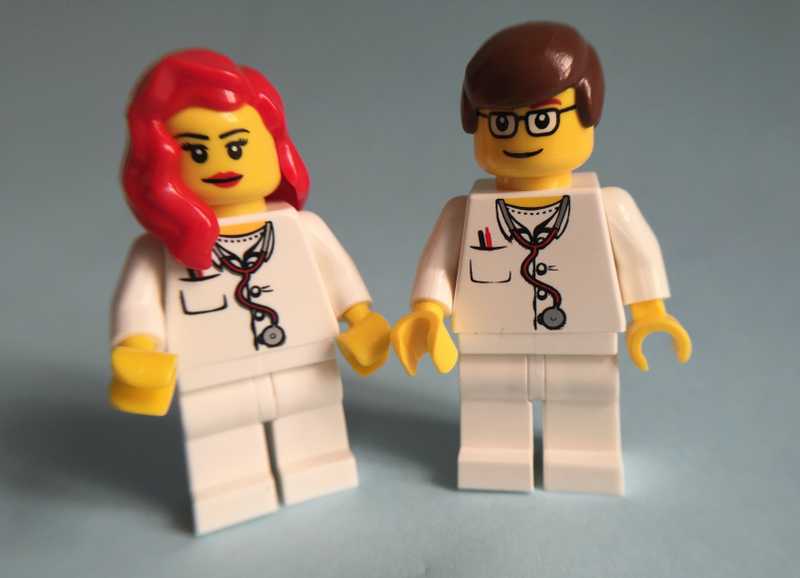With nationwide access to marijuana coming in October, many Canadians are hoping to get new relief for conditions ranging from migraines to seizures to muscle spasms—you name it. People expect to go to their family doctors—their trusted source for medical care and information—and find out more about medical marijuana options.
But rather than getting their treatment choices laid out for them, patients may be greeted with shrugs.
Some doctors may discourage them, saying there’s insufficient research on the medical benefits of marijuana, so they can’t recommend any cannabis treatments. Or worse, these medical professionals may not be versed in what little research there is that’s out there and so can’t provide any help at all.
A Heated Debate on the Doctor’s Role in Medical Marijuana
Last April, the Canadian Consortium for the Investigation of Cannabinoids held a medical conference in Toronto. Attendees included scientists who study cannabis, physicians, pharmacists and nurses. A representative from the Canadian Medical Association (CMA) received boos and hisses from the audience when he declared the organization would distance itself from the country’s medical cannabis policy with legalization.
“Our view is really that now that the government is obviously intending to legalize this [cannabis], once this is a substance that's available to all Canadians, there's really no need for physicians to continue to serve in that gatekeeper role,” said Dr. Jeff Blackmer, who also pointed out that the CMA has been opposed to the cannabis policy from the beginning.
Is Evidence Lacking for Medical Marijuana?
According to Dr. Blackmer, eight out of nine Canadian doctors aren’t comfortable discussing, let alone prescribing, medical cannabis. The problem is that the “level of evidence [for the medical benefits of marijuana] doesn't reach the quality that we demand for every other product that physicians prescribe,” he said.
Calgary pediatrician Scott McLeod echoed other doctors’ responses when he wrote an opinion piece for CBC saying:
“While I remain hopeful that medical marijuana may bring medical breakthroughs in the future, more needs to be done to inform the public that medical marijuana remains in experimental stages—and currently, for the majority of conditions or ailments, it has minimal to no evidence of benefit and may even be harmful.”
Dr. McLeod’s fear is that in the absence of evidence and physician support, people will start self-medicating with potent cannabis, perhaps doing themselves more harm than good.
In his view, greater psychoactive potency of very strong marijuana could pose more of a health risk to people than if they, say, self-medicated with naturopathic cures.
This doesn’t take into account, however, those medical marijuana patients with severe pain from treatments like chemotherapy or health conditions like intense migraines. A recent Italian study found that higher doses of tetrahydrocannabinol (THC) and cannabidiol (CBD)—200 mg of the two cannabinoids—were effective in stopping acute migraines and cluster headaches.
So, while some doctors are worried about potent cannabis and larger doses, they must also look at health conditions where low potency marijuana products or microdoses of cannabinoids may not be helpful.
Doctors Must Have Answers About Cannabis Use
On the flip side of the coin, there’s a growing number in the medical community who believe they have a duty to get the information and answers their patients need about cannabis for health issues.
Dr. Mark Ware, a medical cannabis researcher at McGill University in Montreal, points out that Canada already has a Cannabis Act, outlining medical uses. So, doctors need to be ready to talk to patients about:
- potential interactions between cannabis and other medications
- marijuana dosage levels
- potential risks to medicating with cannabis
He says that cannabis’s therapeutic potential has been proven to be effective in addressing a range of ailments, including “some forms of severe neuropathic pain, spasticity and neuropathy in association with multiple sclerosis, appetite loss in patients with HIV wasting syndrome, nausea and vomiting in patients with chemotherapy.
“And also, CBD, the non-psychoactive ingredient, appears to be looking very promising in the treatment of epilepsy in young children with severe convulsive disorders,” he said.
RELATED: HOW DOCTORS CAN USE CANNABIS FOR PATIENT CARE
For his part, Dr. David Hepburn—who has travelled the country to educate physicians on why and when to prescribe medical marijuana—acknowledges the need for more medicinal cannabis research. But he also insists that there’s strong anecdotal evidence for cannabis that must be taken into account.
Initially against medical marijuana, he did a complete turnaround after a doctor friend phoned him and said, “My mom is … an octogenarian, cancer-stricken, and her doctor won't help her. My mom would never miss a tax date or jaywalk, and yet the one thing that's helped her with both her pain and her chemo-related symptoms is cannabis.”
Dr. Hepburn agreed to help out and apply to the medical marijuana program on her behalf, leading to his complete about-face.
How to Get Medical Marijuana Help in the Meantime
As more people turn to medical marijuana following legalization and have questions about its therapeutic effects, doctors will be forced to come up with reasonable answers.
In the meantime, what does someone interested in medical marijuana do to get the information they need?
One tried-and-true method is to go to your medical appointment taking all of the information you can find from credible sources (and studies where possible) about your condition and cannabis as a possible treatment. In this internet era, doctors are used to patients coming in armed with reams of information plucked from online sources.
Doctors and other health care professionals will eventually learn to prescribe and educate people about the benefits and drawbacks posed by medical marijuana. Until then, patients need to learn to be their own best advocate.
Photo credit: Sergio Santos
